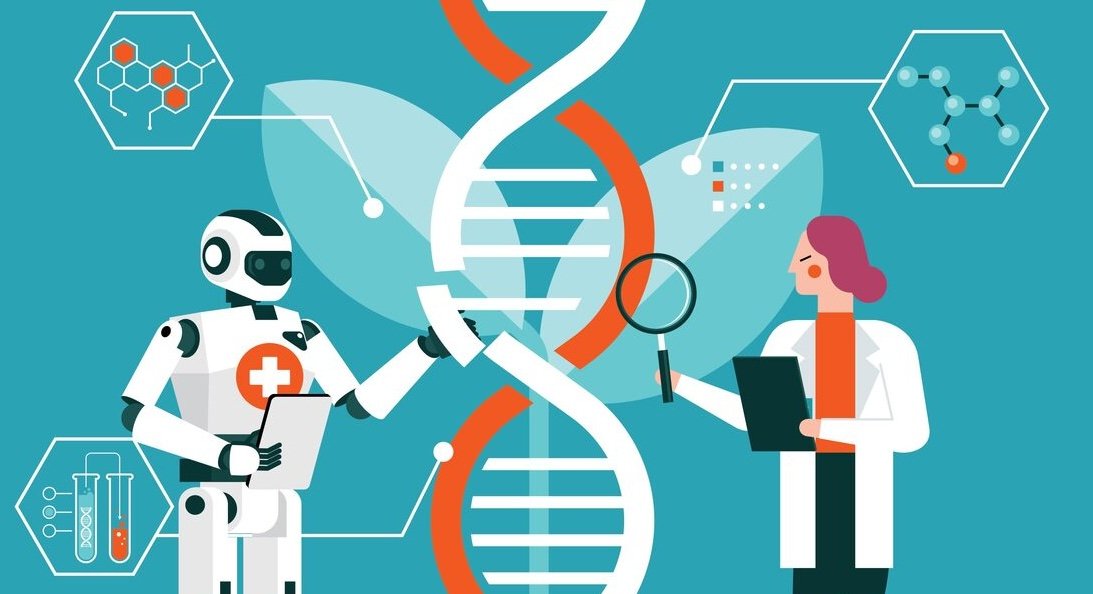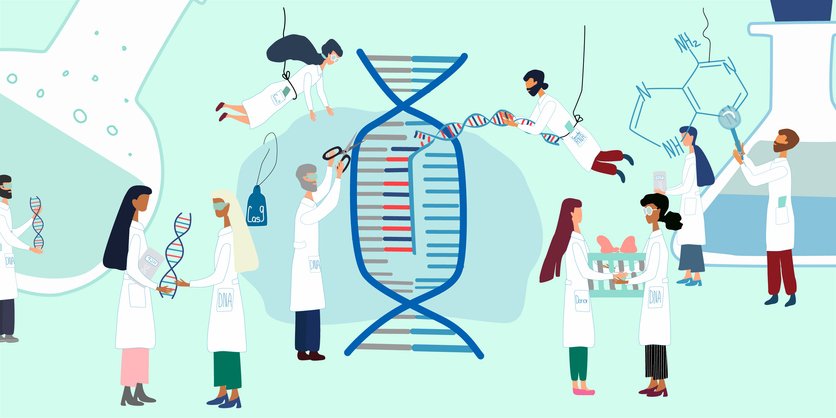CRISPR has taken the bioengineering world by storm since its first introduction. From treating sickle cell diseases to creating disease-resistant crops, the technology continues to boast success on various fronts. But getting CRISPR experiments right in the lab isn’t simple. Scientists need specialized domain knowledge and must spend hours perfecting the experimental design. All of that can change soon, however, thanks to AI.
Researchers at Stanford, Princeton, Google DeepMind, and the University of California, Berkeley have teamed up to develop an AI system based on large language models that can automate the design and analysis of CRISPR-based gene editing experiments.
This work is published in Nature Biomedical Engineering titled, “CRISPR-GPT for agentic automation of gene-editing experiments.”
The multiagent AI system, dubbed “CRISPR-GPT,” is designed to interact and reason with human users as they execute gene-editing tasks. The model was trained using data from scientific literature, public databases, and curated discussions from experts in the field.
“It’s a first example of combining the large language model reasoning ability with expert know-how to make an intelligent system that can push forward scientific research,” said Yuanhao Qu, PhD candidate at Stanford University and the lead author of the study, in an interview with GEN.
Democratizing gene editing
CRISPR-GPT is equipped with three user modalities catered to individuals with beginner to advanced level gene-editing experiences.
A ‘Meta mode’ allows novice users to prompt the agent with an experimental scenario and receive guidance for the gene-editing tasks from start to finish. An example of this is to ask the system to generate a detailed protocol for a CRISPR gene knockout.
An ‘Auto mode’ provides bespoke guidance to advanced users looking for solutions for their experiments. For example, one might ask the system to suggest how to design a guide RNA to knock out a specific gene.
Whereas a ‘Q&A mode’ allows users to ask specific questions regarding gene editing, such as the difference between one CRISPR-Cas system and another, or a troubleshooting issue.
In the paper, the researchers reported novice, undergraduate-level users successfully executing a gene-editing task with the help of CRISPR-GPT. “It’s really democratizing the access [to gene editing],” Qu said.
To run the Q&A mode, the researchers curated more than 10 years of open-forum discussion on CRISPR experiments between scientists. This database of more than 4,000 discussion threads is “like a Reddit for gene editing,” Le Cong, PhD, a bioengineer at Stanford University and the corresponding author of the study, told GEN.
The database, which includes back-and-forth conversations on how to execute a gene-editing experiment, troubleshoot an error, or make sense of the data, offers insights that are closer to a scientist’s thought process than any scientific papers, Cong said. “This amount of data is sufficient to fine-tune our open-source language model to be thinking and acting much more like a scientist.”
CRISPR-GPT facilitates the human-software interaction through the combined capability of four AI agents: a ‘user-proxy agent’ that serves as an interface between the human scientist and the AI system, an ‘LLM planner agent’ that breaks down human prompts into categories of tasks, a ‘task executor agent’ that generates specific instructions and feedback based on the user’s input, and a ‘tool provider agent’ that interfaces with external sources, such as web browser or scholarly publications.
An AI copilot
While other researchers have explored LLMs for CRISPR-based gene editing, many of these models deal with specific protein design tasks. “An AI agent like CRISPR-GPT does much more than that,” Cong said. He describes CRISPR-GPT as an AI co-pilot that understands what the experimental endpoint is. In addition, since the system is trained using domain-specific knowledge, it outperforms standard GPTs such as GPT-4o by OpenAI.
Another advantage of CRISPR-GPT over standard LLM is its built-in safety features designed to prevent any malicious use. “There are a lot of models floating around and people could use them to maybe design or modify a virus,” Cong said. “I think the [CRISPR-GPT] agent is both enabling and ensuring safety for us.”
In light of the recent breakthrough of a customized CRISPR gene editing therapy applied to treat an infant with a rare genetic disease, Cong is optimistic that the CRISPR-GPT could accelerate the progress of gene editing even more. “Everyone is racing against time to cure those with rare diseases. If we can save some time, it can mean the difference between living or not living for these babies,” he said.
While CRISPR-GPT still requires a human user to execute gene-editing tasks, the researchers are hoping to integrate it with robotics for a fully automated system.
The post “CRISPR Meets GPT” to Supercharge Gene Editing appeared first on GEN – Genetic Engineering and Biotechnology News.




